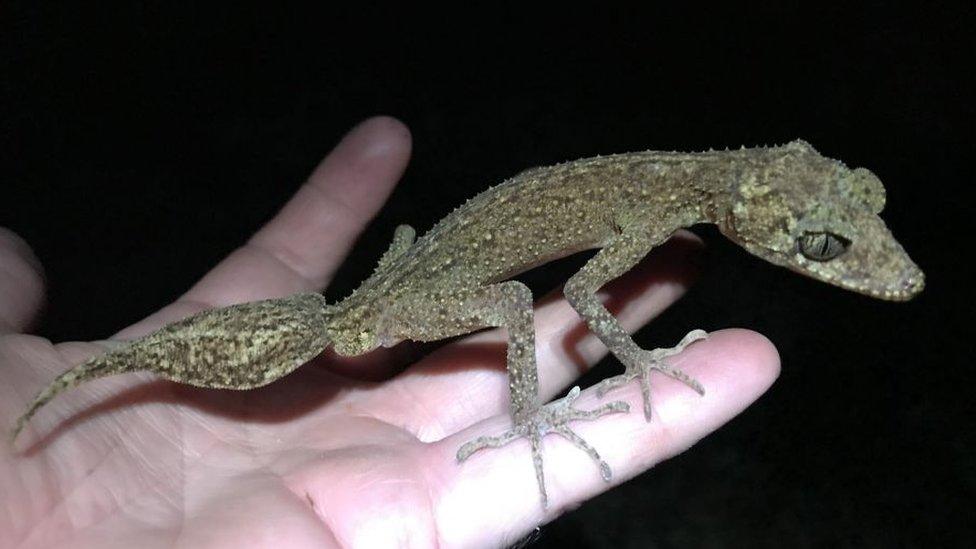Wildlife: New 'beaky' gecko discovered
- Published
- comments

The Scawfell Island Leaf Tailed Gecko has been hiding under boulders on an Australian island
Scientists have been left flabbergasted after discovering a new species of gecko on an island off the coast of Australia.
The reptile, which scientists say has "a leaf shaped tail and a beaky head" was found hiding under boulders where its skin camouflages it from predators.
Scientists were there during a routine wildlife survey of Scawfell Island which has no humans living on it.
Dr Conrad Hoskin, who found the gecko, says it was an "incredible" discovery.
The Gecko's camouflage is so good it's almost invisible
The gecko has been called the Scawfell Island leaf-tailed gecko because of the distinctive shape of its tail.
Although some species are still being discovered each year, researchers were surprised to find such a large animal scientists had never seen before.
"The fact that this gecko remained undiscovered to science shows that there are still areas of Australia with hidden secrets," Dr Hoskin says.
It was found on one of many islands near the Great Barrier Reef off the coast of Australia.
The Great Barrier reef is the world's biggest coral reef system
Coral reefs are networks of creatures called coral which look like plants but are actually animals
The Great Barrier Reef is home to thousands of species of fish and other creatures
Rising ocean temperatures caused by climate change are putting coral and the fish in the reef at risk
The Great Barrier Reef is home to clown fish - like the ones in Finding Nemo
How many geckos live there?
Scientists who've discovered the Scawfell Island leaf-tailed gecko aren't sure how many there are just yet.
They say there are at least 30 of them on the island but need to do more work to see if there are any more.
It could mean that despite them only just being discovered, they could already be endangered species.
